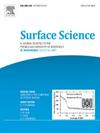The sensing performance of bilayer β12- and χ3-borophenes for NO molecules: A DFT-NEGF study
IF 2.1
4区 化学
Q3 CHEMISTRY, PHYSICAL
引用次数: 0
Abstract
Since bilayer (BL) β12- and χ3-borophenes have different interlayer interactions and are more stable than the monolayer (ML) counterparts, in the present study we theoretically investigated the adsorption behaviors of NO molecules on the two BL structures, and the corresponding transport properties and sensing performance. Compared with ML β12- or χ3-borophene, for the monomolecular adsorption, NO molecule on BL β12- or χ3-borophene adopts different adsorption configuration and releases more heat energy. For the multimolecular adsorption, we found that these NO molecules tend to form molecular dimer (NO)2 or molecular trimer (NO)3 to enhance the stabilities of the adsorption configurations, while molecular tetramer (NO)4 was found to be unstable. Furthermore, the obtained results indicate that the transport properties of BL β12- or χ3-borophene are sensitive to the adsorption of NO molecules. Although BL β12- and χ3-borophenes have different interlayer interactions, they have similar sensing performance and can be used to detect NO molecules. We hope that the present study could provide more insights into different BL borophenes and the sensing performance.

双层β12-和χ3-波罗芬对NO分子的传感性能:DFT-NEGF研究
由于双层(BL) β12-和χ3-硼罗芬具有不同的层间相互作用,并且比单层(ML)更稳定,因此本研究从理论上研究了两种BL结构对NO分子的吸附行为,以及相应的运输性质和传感性能。与ML β12-或χ3-硼罗芬相比,对于单分子吸附,NO分子在BL β12-或χ3-硼罗芬上采用不同的吸附构型,释放更多的热能。对于多分子吸附,我们发现这些NO分子倾向于形成分子二聚体(NO)2或分子三聚体(NO)3,以增强吸附构型的稳定性,而分子四聚体(NO)4则不稳定。此外,研究结果表明,BL β12-或χ3-硼罗芬的转运特性对NO分子的吸附非常敏感。虽然BL β12-和χ3-波罗芬具有不同的层间相互作用,但它们具有相似的传感性能,可用于检测NO分子。我们希望本研究能够对不同BL borophenes及其传感性能提供更多的见解。
本文章由计算机程序翻译,如有差异,请以英文原文为准。
求助全文
约1分钟内获得全文
求助全文
来源期刊

Surface Science
化学-物理:凝聚态物理
CiteScore
3.30
自引率
5.30%
发文量
137
审稿时长
25 days
期刊介绍:
Surface Science is devoted to elucidating the fundamental aspects of chemistry and physics occurring at a wide range of surfaces and interfaces and to disseminating this knowledge fast. The journal welcomes a broad spectrum of topics, including but not limited to:
• model systems (e.g. in Ultra High Vacuum) under well-controlled reactive conditions
• nanoscale science and engineering, including manipulation of matter at the atomic/molecular scale and assembly phenomena
• reactivity of surfaces as related to various applied areas including heterogeneous catalysis, chemistry at electrified interfaces, and semiconductors functionalization
• phenomena at interfaces relevant to energy storage and conversion, and fuels production and utilization
• surface reactivity for environmental protection and pollution remediation
• interactions at surfaces of soft matter, including polymers and biomaterials.
Both experimental and theoretical work, including modeling, is within the scope of the journal. Work published in Surface Science reaches a wide readership, from chemistry and physics to biology and materials science and engineering, providing an excellent forum for cross-fertilization of ideas and broad dissemination of scientific discoveries.
 求助内容:
求助内容: 应助结果提醒方式:
应助结果提醒方式:


